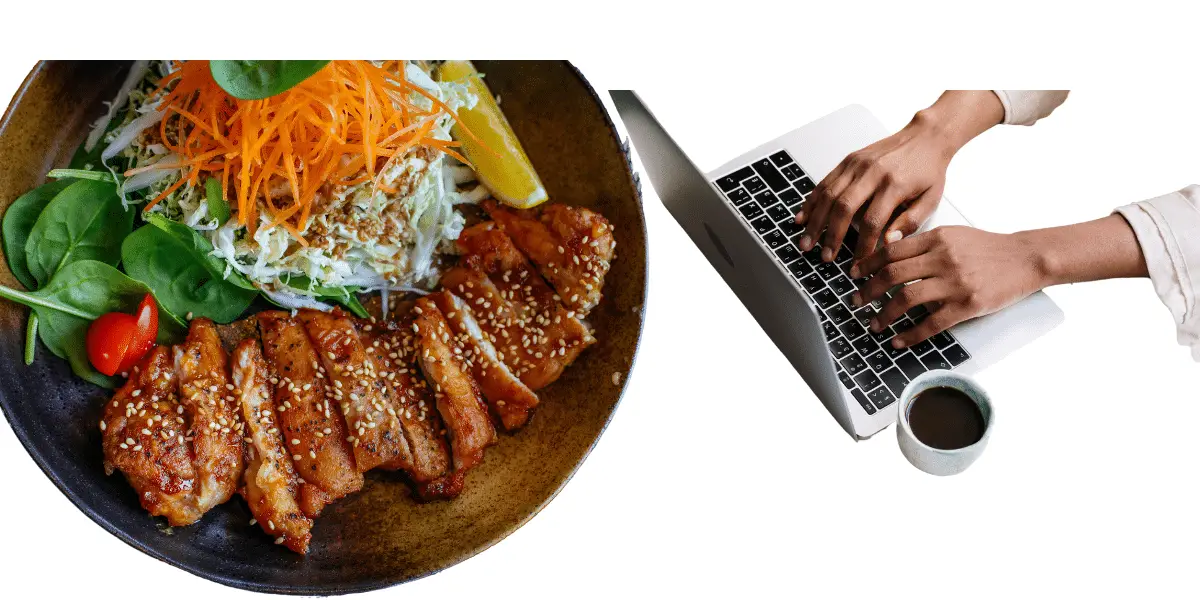
Kylie, the founder of Midwest Foodie, a popular food blog made over $99,000 from her blog in the first quarter of 2024. If you divide it by 3, that’s $33,000 monthly by just showing people how to prepare different types of foods.
Below is proof of her blog income in January 2024:
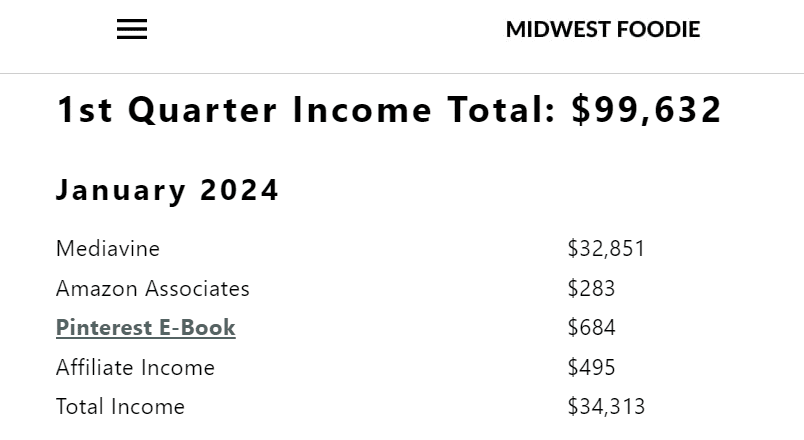
This is to show you how profitable a food blog can be in 2024 and beyond. I know as a woman, stay-at-home, or nursing mother who prepares delicious meals, you have been thinking of how to start your own food blog and make money from it.
In this guide, I walked you from start to finish on how to start a food blog and make money like Kylie.
Tools To Run A Successful Food Blog
Hostinger – Super-fast, affordable and easy-to-manage hosting – starts at $2.99/month +75% discount
Jasper AI – Write blog posts that look like what humans wrote – write 10,000 words FREE
Fiverr – Hire WordPress blog expert to design and set up your blog
Step 1: Choose A Niche
Don’t just be a general food blogger, nice down into aspects you have first-hand knowledge and experience on. That will help you effortlessly create blog posts with the help of AI writing tools like Jasper. It will also make you an authority in that niche and your audience will consume every content you put out there which leads you to sell of your products to them. Vegan, Deserts, Regional Cuisine, Baked, Seafood, Organic food, and Continental are some popular food niches you can consider.
Step 2: Choose A Name
Go with a name that is easy to remember and reflects your niche. You won’t want your audience or fans to always forget your blog name because it’s hard to remember. A two-word name is always recommended and you can use Jasper AI to generate a two-word, simple name for a flood blog in a particular niche.
Step 3: Host Your Blog
You need to host your blog on a web hosting platform so people can find your content when they enter your blog name in their browser. There are plenty of web hosting services. I recommend Hostinger because I use it and my experience with them has been fantastic. It’s super-fast which ensures your pages load speedily( under 3 seconds).
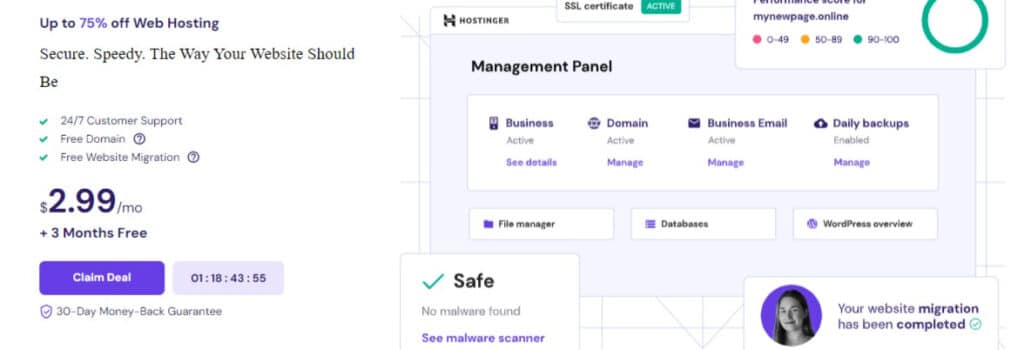
It’s easy to manage and also affordable. With just $2.99 per month, you can host your blog and there is also a discount of up to 75% for a yearly, 2-year hosting, plus you get a free domain and SSL certificate for the first year.
Step 4: Set Up Your Blog
After hosting your blog, the next is to set it up by installing WordPress, a popular content management system many food bloggers use. I recommend it because it’s fast and easy to manage – you don’t have to be tech-savvy to use it.
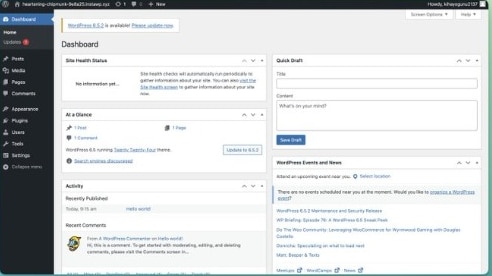
After installing WordPress, you need to set it up. Many beginners get a little confused here. That’s why I recommend you hire a freelancer on Fiverr to help you set up your blog successfully. They will install and set up theme, create pages, design your WordPress blog with unique colors, set up menu, header, and footer which you may not find easy to do.
Step 4: Create Blog Posts
Creating blog posts for your food blog is easier than ever. Thanks to Jasper AI, a top-rated AI writing tool that writes like humans. With just a single prompt, it can generate an outline, and write a blog post of over 2000 words for you in a unique tone your audience will like.
I use Jasper to write and many bloggers including food bloggers use it to scale their content.
Many people say “ AI content” is low quality but that’s false.
Jasper has proven that wrong as most of its content are of great quality and also ranks on Google. All you need to do is give a high-quality prompt, edit, and add human touch to the output before publishing. Jasper allows you to write 10,000 words for free. So you can test it and see for yourself.
Coming to images that are important in any food blog post, use your smartphone to take photos of food you cook, send them to your PC, and upload them on your post.
Step 5: Driving Traffic
To make a huge amount of money just like Kylie does a month, you need a good amount of traffic. Pinterest is the friend of many food bloggers and that is where people like Kylie drive hundreds of thousands of traffic monthly.
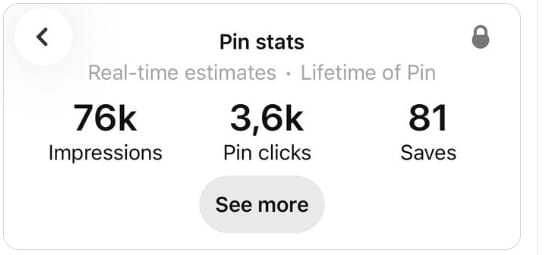
70% of the people on Pinterest are women and anything food attracts their attention like crazy since they cook meals at home. I have written an article on how to drive traffic to your blog using Pinterest but I will show you basic tips here.
First is to create a Pinterest account and convert it to a business account. Set up your profile, and write your bio. Create boards based on various topics you want to cover in your food niche and also what users on Pinterest search. A simple search on the search bar will give you an idea.

Next is to create pins using Canva ( it has templates for Pinterest), optimize, and upload them on your Pinterest account. With consistency, quality content, and especially high-resolution food images on your pin, you can drive massive traffic within a short period. I have been using Pinterest to drive traffic to this blog in the last 3 years. Based on my experience, the more high-quality pins you upload, the more traffic you get from Pinterest. You can use a tool like Tailwind to boost the rate of pinning and repining on Pinterest.
Step 6: Monetization
There are many ways to make money from your food blog. The commonest is display ad. Mediavine and Raptive are the highest-paying ad networks but you can start with Ezoic which has no traffic requirements until you hit 50k monthly sessions and move to Mediavine or 100k monthly page views and move to Raptive.
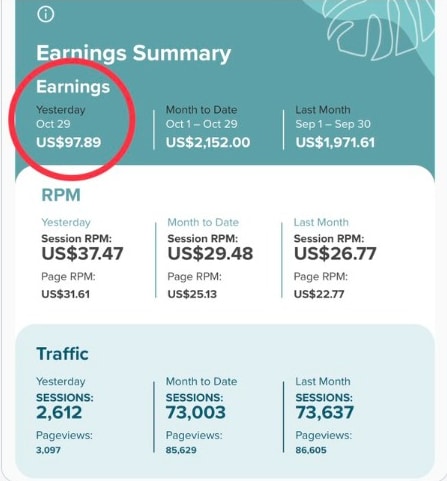
Kylie, who I used to inspire you has Mediavine ads on her blog and she made $32,851 with that in January 2024. In fact, 85% of her blog income comes from Mediavine ad revenue.
Affiliate marketing is another way to earn money on your blog. Once you begin to get up to 5k monthly traffic from Pinterest, sign up for Amazon affiliate program and promote cooking items or kitchen utensils you think your audience will find helpful. Amazon affiliate is one of the ways Kylie also makes money from her blog.
There are other affiliate programs suitable for food niches. Make your research and join legit ones to boost your earnings.
Sponsorship is another way to monetize your food blog. Once brands notice you have a huge audience on your blog, they will reach out for you to promote them on your blog. Some food bloggers make up to $5k monthly from brand sponsorship deals.
When you grow your audience and have them join your email list, you can create your own products and sell to them which even pays more as you totally own any money you make. Nothing like taking a percentage like with affiliate programs.
That’s it with starting a food blog.
Just like Kylie, you too can make a living and achieve financial freedom by starting a food blog today. I have shown you all it takes. From choosing a niche, hosting your blog on Hostinger, using Pinterest to drive traffic, to monetizing via ads, affiliate marketing, sponsorship, and selling of your products. It’s up to you to choose a niche you have good knowledge in and give it a try.


